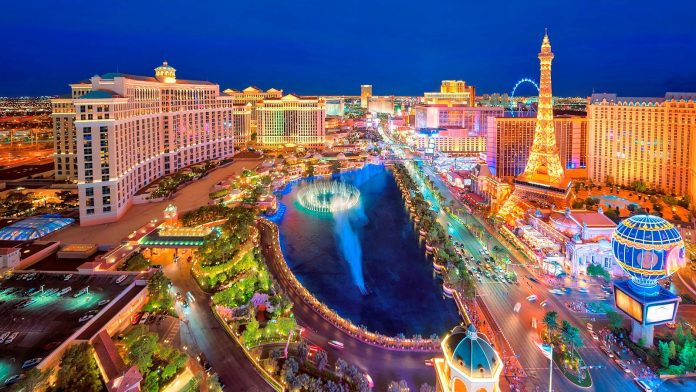Tourism to Las Vegas and Southern Nevada fell sharply in June, with visitation down 11.3% year-over-year to 3.1 million, according to data released Wednesday by the Las Vegas Convention and Visitors Authority (LVCVA). The drop marks the sixth straight monthly decline and the steepest percentage fall since February 2021.
“Reflecting the broader backdrop of persistent economic uncertainty and weaker consumer confidence, compounded by a slower convention month, the destination saw an 11 percent year-over-year decline in visitation,” said Kevin Bagger, vice president of the LVCVA Research Center.
Convention traffic fell 10.7% to 374,600 in June, weighed down by the absence of major events such as InfoComm and Cisco Live, which collectively drew nearly 50,000 attendees to the city last year. Overall visitation for the first half of 2025 stands at 19.6 million, down 7.3% from a year ago.
Lodging indicators also softened, with occupied room nights falling 9.7% to 3.5 million. The average hotel occupancy rate dropped 6.5 percentage points to 78.7%, its lowest level since August 2022. Room rates slid 6.6% to $163.64 per night, while Strip occupancy dropped to 81.9% from 88.3% a year ago. Revenue per available room (RevPAR) was down 13.8% overall, including a 13.5% decline on the Strip.
Passenger traffic at Harry Reid International Airport fell 6.3% to 4.7 million, the fifth straight monthly decrease. International arrivals dropped 9.8%, and domestic traffic declined 6.1%. Spirit Airlines saw a steep 36.8% drop, while market leader Southwest Airlines edged up 0.1%.
Highway traffic to Las Vegas was mixed. While total volume on major routes rose 0.9%, traffic at the Interstate 15 border crossing with California declined 4.3%.
In contrast, casino operators posted improved results. Nevada’s statewide gaming win rose 3.5% year-over-year to $1.332 billion in June, according to the Nevada Gaming Control Board. That marked the 52nd consecutive month of statewide gaming revenue topping $1 billion.
Gaming win continues to perform ahead of prepandemic 2019, said Shelley Newell, senior economic analyst for the Control Board.
Despite the monthly gain, fiscal year 2024–25 gaming revenue declined 0.8% to $15.64 billion, the first annual drop since the COVID-impacted 2020–21 period. Clark County, which includes Las Vegas, posted a 1% annual decline to $13.58 billion. The Strip was down 3% to $8.78 billion, trailing only South Lake Tahoe in terms of percentage loss.
Still, several submarkets recorded gains. Downtown Las Vegas gaming revenue climbed 10.5% in June and ended the fiscal year up 2.1%. The Boulder Strip surged 19.3% for the month, while outlying areas of Clark County, including the Durango resort, rose 5.3% year-over-year to $1.922 billion, the highest growth among tracked submarkets.
Clark County accounted for 86.8% of the state’s total gaming revenue, with the Strip alone generating 56.1% of the state’s win.
Entertainment continued to be a draw, with residencies by Rod Stewart, Bruno Mars, and Kenny Chesney, as well as sporting events such as a CONCACAF Gold Cup doubleheader and a UFC 317 bout at T-Mobile Arena, helping offset some visitation weakness.
